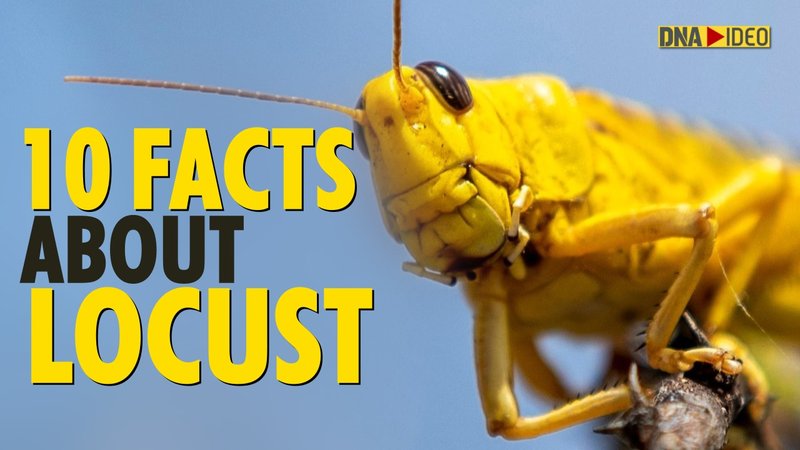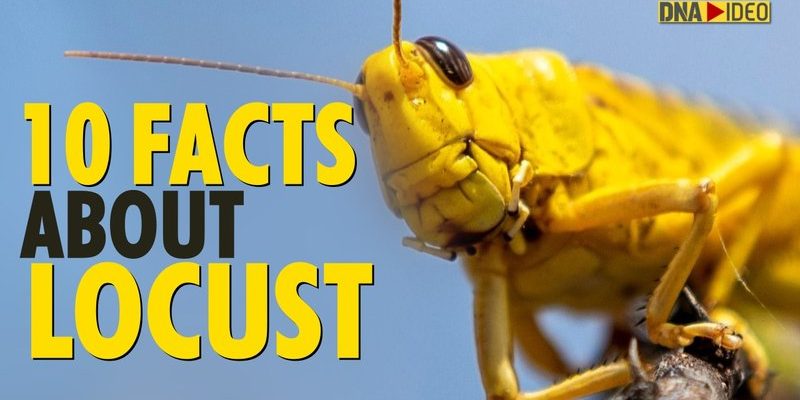
Locusts have intrigued scientists and farmers alike for centuries. Their ability to change their behavior and physical appearance based on environmental conditions is nothing short of remarkable. They remind us that nature often has hidden depths, much like those old family photo albums that can tell stories we never knew existed. So, grab your coffee, and let’s explore these intriguing creatures!
1. Locusts Are Not Just Grasshoppers
You might think of locusts as just another type of grasshopper, but they actually belong to the same family—Acrididae. This family includes a vast range of species. What sets locusts apart is their unique ability to undergo *phase polyphenism*. This means they can switch from a solitary phase to a gregarious one.
– Solitary Phase: Here, locusts live alone, maintaining their typical grasshopper appearance and behavior.
– Gregarious Phase: In contrast, when populations increase due to favorable conditions, they can band together, change color, and become highly social creatures.
This transformation is a survival strategy that can lead to devastating swarms capable of consuming entire fields of crops in just a few hours.
2. Swarming Behavior Is a Survival Strategy
Swarming locusts can be a true force of nature. Their swarming behavior isn’t just random chaos; it serves a vital purpose. When food is abundant, locusts will swarm together to find new feeding grounds.
You might be wondering how they coordinate such massive movements. It’s fascinating! They communicate through changes in behavior and chemical signals called pheromones. When one locust detects population density and the presence of food, it sends out pheromones that trigger the rest to swarm. Imagine a flash mob of dancers suddenly breaking into a choreographed routine—that’s how these insects move!
This collective movement allows them to cover vast distances, seeking out new areas and enabling them to efficiently exploit resources.
3. Locusts Can Travel Long Distances
Speaking of distance, did you know that locusts can travel up to 150 kilometers (about 93 miles) in a single day under the right conditions? This ability to cover ground quickly is crucial for their survival, especially when foraging for food.
– They often take advantage of wind currents, gliding effortlessly to conserve energy.
– During swarms, they can reach areas far from their original home, affecting ecosystems along the way.
This long-distance travel isn’t just impressive; it plays a vital role in their life cycle and population dynamics, allowing them to thrive even in harsh environments.
4. They Have a Unique Diet
Locusts are primarily herbivores, munching on a wide range of plants. However, they can also switch things up and turn to more extreme diets when necessary. They have a remarkable ability to adapt their food preferences based on what’s available in their environment.
– A locust’s diet can include everything from grass to crops like wheat, barley, and even trees.
– When food is scarce, they can even consume other insects—talk about flexibility!
This adaptability is essential for their survival, especially during dry periods when green plants are hard to come by.
5. Locusts Are Important for Ecosystems
Despite their reputation as pests, locusts play an important role in their ecosystems. They serve as food for a variety of animals, including birds, reptiles, and small mammals.
– Their munching habits help stimulate plant growth by pruning older plants, which encourages new shoots to emerge.
– When locusts die, they become food for soil organisms, contributing to nutrient cycles.
So, while they may cause chaos for farmers, locusts are also crucial in maintaining healthy ecosystems. They remind us that balance is key in nature.
6. They Can Reproduce Rapidly
If you think locusts are tough, wait until you hear about their reproductive capabilities. A single female locust can lay between 40 to 100 eggs in a single batch, and they can reproduce multiple times throughout their life.
– Their eggs are often buried in the ground, where they remain safe until conditions are right for hatching.
– This rapid reproduction allows locust populations to explode following favorable weather conditions, leading to those infamous swarms.
With the right conditions, you can go from a handful of locusts to millions in a matter of weeks!
7. Locusts Can Trigger Climate Change Effects
Here’s a twist you might not expect: locusts can influence climate change. Their swarming behavior can significantly affect the environment, especially in regions prone to drought.
– When locusts swarm, they can strip entire regions of vegetation, leading to increased soil erosion and desertification.
– This degradation can make areas more vulnerable to climate impacts, creating a cycle that’s hard to break.
It’s a reminder of how interconnected our ecosystems are and how one species can have a ripple effect on a larger scale.
8. They Have a Rich Cultural History
Throughout history, locusts have inspired myths, stories, and even plagues. In the Bible, locusts are famously mentioned as one of the ten plagues of Egypt, painting them in a negative light.
– Many cultures use locusts in traditional dishes, particularly in regions where they are abundant.
– They symbolize both destruction and abundance, reflecting the duality of their nature—much like a natural disaster that can also lead to renewed growth.
Understanding this rich cultural context adds another layer to our perception of these insects.
9. Scientists Study Locusts for Insights
Incredibly, scientists are studying locusts to gain insights into various fields, including ecology, genetics, and even robotics. Their swarming behavior is of particular interest.
– Researchers are looking at how they communicate and swarm to improve algorithms in robotics, which could lead to advancements in technology.
– Studying locusts can also help us understand how populations respond to changing climates and environmental pressures.
So, the next time you see a locust, remember: they’re not just pests—they’re also key players in scientific research.
10. Locust Plagues Can Be Managed
Lastly, let’s talk about how we can manage locust populations. While these insects can cause devastating crop damage, various strategies are in place to control their swarms.
– Early warning systems monitor environmental conditions that lead to swarming.
– Farmers can use biological control methods or insecticides, but it’s essential to balance these approaches to minimize harm to beneficial insects.
Ultimately, understanding locust behavior and life cycles allows us to better manage their populations while preserving ecosystems.
In closing, locusts are far more than the agricultural nuisances they’re often made out to be. They play complex roles in our ecosystems and offer a wealth of knowledge for scientists. By learning about these fascinating insects, we not only gain insight into their lives but also learn how to coexist with them better. So, the next time you hear about a locust swarm, remember the many layers to these creatures and the incredible stories they tell about our world.

